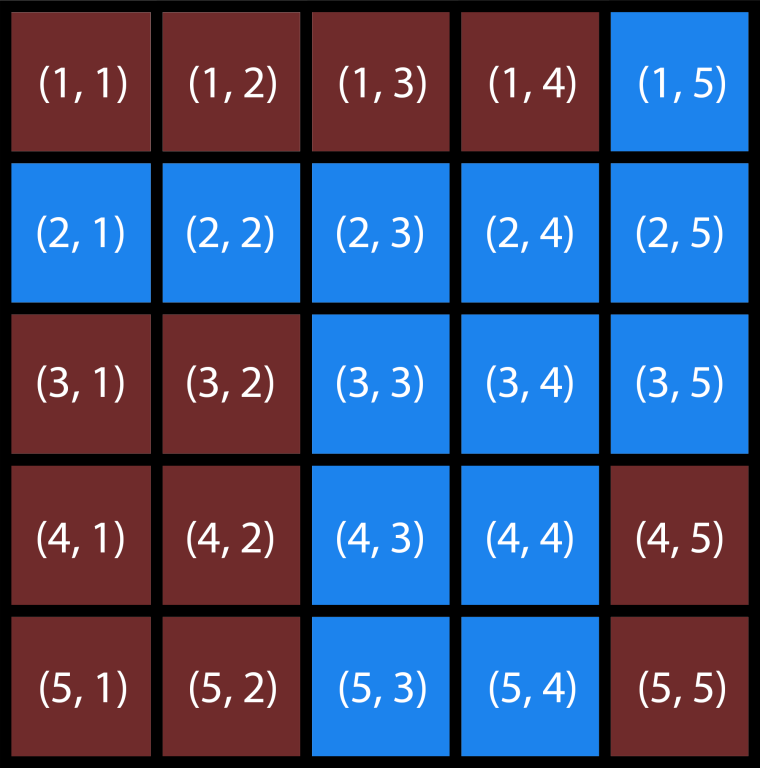CF1130C.Connect
普及/提高-
通过率:0%
AC君温馨提醒
该题目为【codeforces】题库的题目,您提交的代码将被提交至codeforces进行远程评测,并由ACGO抓取测评结果后进行展示。由于远程测评的测评机由其他平台提供,我们无法保证该服务的稳定性,若提交后无反应,请等待一段时间后再进行重试。
题目描述
Alice lives on a flat planet that can be modeled as a square grid of size n×n , with rows and columns enumerated from 1 to n . We represent the cell at the intersection of row r and column c with ordered pair (r,c) . Each cell in the grid is either land or water.
 An example planet with n=5 . It also appears in the first sample test.Alice resides in land cell (r1,c1) . She wishes to travel to land cell (r2,c2) . At any moment, she may move to one of the cells adjacent to where she is—in one of the four directions (i.e., up, down, left, or right).
An example planet with n=5 . It also appears in the first sample test.Alice resides in land cell (r1,c1) . She wishes to travel to land cell (r2,c2) . At any moment, she may move to one of the cells adjacent to where she is—in one of the four directions (i.e., up, down, left, or right).
Unfortunately, Alice cannot swim, and there is no viable transportation means other than by foot (i.e., she can walk only on land). As a result, Alice's trip may be impossible.
To help Alice, you plan to create at most one tunnel between some two land cells. The tunnel will allow Alice to freely travel between the two endpoints. Indeed, creating a tunnel is a lot of effort: the cost of creating a tunnel between cells (rs,cs) and (rt,ct) is (rs−rt)2+(cs−ct)2 .
For now, your task is to find the minimum possible cost of creating at most one tunnel so that Alice could travel from (r1,c1) to (r2,c2) . If no tunnel needs to be created, the cost is 0 .
输入格式
The first line contains one integer n ( 1≤n≤50 ) — the width of the square grid.
The second line contains two space-separated integers r1 and c1 ( 1≤r1,c1≤n ) — denoting the cell where Alice resides.
The third line contains two space-separated integers r2 and c2 ( 1≤r2,c2≤n ) — denoting the cell to which Alice wishes to travel.
Each of the following n lines contains a string of n characters. The j -th character of the i -th such line ( 1≤i,j≤n ) is 0 if (i,j) is land or 1 if (i,j) is water.
It is guaranteed that (r1,c1) and (r2,c2) are land.
输出格式
Print an integer that is the minimum possible cost of creating at most one tunnel so that Alice could travel from (r1,c1) to (r2,c2) .
输入输出样例
输入#1
5 1 1 5 5 00001 11111 00111 00110 00110
输出#1
10
输入#2
3 1 3 3 1 010 101 010
输出#2
8
说明/提示
In the first sample, a tunnel between cells (1,4) and (4,5) should be created. The cost of doing so is (1−4)2+(4−5)2=10 , which is optimal. This way, Alice could walk from (1,1) to (1,4) , use the tunnel from (1,4) to (4,5) , and lastly walk from (4,5) to (5,5) .
In the second sample, clearly a tunnel between cells (1,3) and (3,1) needs to be created. The cost of doing so is (1−3)2+(3−1)2=8 .